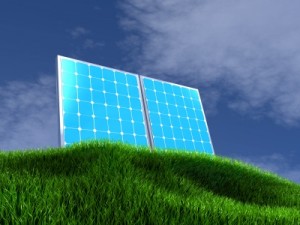Energy Efficiency
Knowing energy basics makes becoming energy efficient easier.
Energy is defined simply as the ability to do work, it is what makes the T.V. turn on and bakes the Pizza in your oven. Without energy our lives would cease to exist, so it is important to understand the basics of energy in America and energy efficiency. For purposes of this article we will focus on the two main groups of energy which are renewable energy and nonrenewable energy. According to the Energy Information Administration, the U.S. consumes 89.5% nonrenewable energy, leaving only 10.5% of our energy being produced from renewable sources.
 The nonrenewable energy sources are named nonrenewable because supplies are limited and we are unable to produce more. Propane, oil, coal, uranium (nuclear) and natural gas are some of the most common types of nonrenewable energy. Unfortunately most of our cars, homes and offices are powered by these sources. Renewable energy on the other hand is able to be resupplied in a short time or no time at all. Hydropower, solar energy, biomass, wind energy and geothermal energy are the common examples of renewable energy.
The nonrenewable energy sources are named nonrenewable because supplies are limited and we are unable to produce more. Propane, oil, coal, uranium (nuclear) and natural gas are some of the most common types of nonrenewable energy. Unfortunately most of our cars, homes and offices are powered by these sources. Renewable energy on the other hand is able to be resupplied in a short time or no time at all. Hydropower, solar energy, biomass, wind energy and geothermal energy are the common examples of renewable energy.
Currently hydroelectric energy, mostly produced by water falling through a dam, is the most common renewable energy source in America, accounting for 6.9% of the total supply. Wind energy is the fastest growing source of electricity and may soon surpass hydropower as the top source of renewable energy. The inverse of course is nonrenewable sources where coal is the leader powering 44.6% of our consumption. Coal is a fossil fuel that is burned to produce energy; this process releases greenhouse gasses into the atmosphere contributing to global warming and polluted air.
Using energy wisely is the premise of energy conservation, defined as any behavior resulting in the use of less energy. Energy efficiency is where technologies or other solutions require less energy to perform the same task. An example of energy conservation is unplugging a device when it is not in use or turning off a light when you leave the room. Using a compact florescent light bulb rather than an incandescent is an example of energy efficiency. Combining these two methods can help you lead an eco-friendly lifestyle and become less dependent on fossil fuels.
Image: Salvatore Vuono